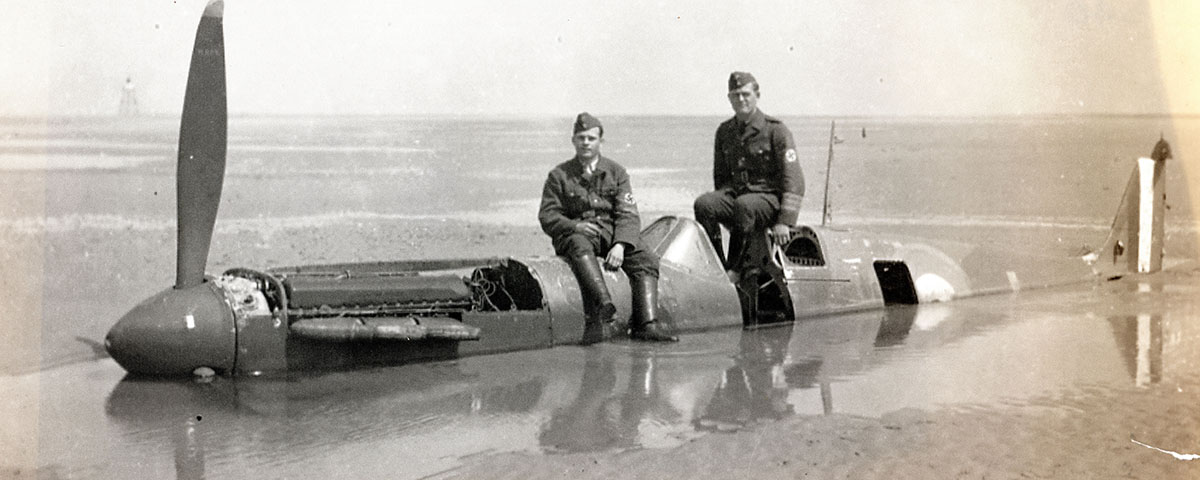Long buried on a Calais beach, a meticulously reconstructed Mark I is once again in flying trim.
In the fall of 1980, a beachcomber walking the shoreline at Calais, on France’s northern coast, spotted something unusual protruding from the wet sand. At first glance it appeared to be a collection of corroded alloy parts, and since the detritus of war is commonplace in that region, he thought little of it. On later walks he saw more objects poking up through the sand. Finally, a series of strong coastal gales revealed the remarkable outline of a World War II–vintage Supermarine Spitfire on the beach. Incredibly, the classic fighter still looked to be mostly intact.
Newspapers soon publicized the discovery, and since the Spit was easily accessible, trophy hunters descended. It wasn’t long before the fighter was suffering far more at their hands than it had in the arms of Mother Nature, which for 40 years had hidden it from scavengers. The starboard wing was hacked open, and one of the Browning .303-inch machine guns was ripped from its mounting. Gone too was the canopy frame and the propeller spinner cone, along with both Rolls-Royce legends embossed on the Merlin engine’s rocker-box covers.
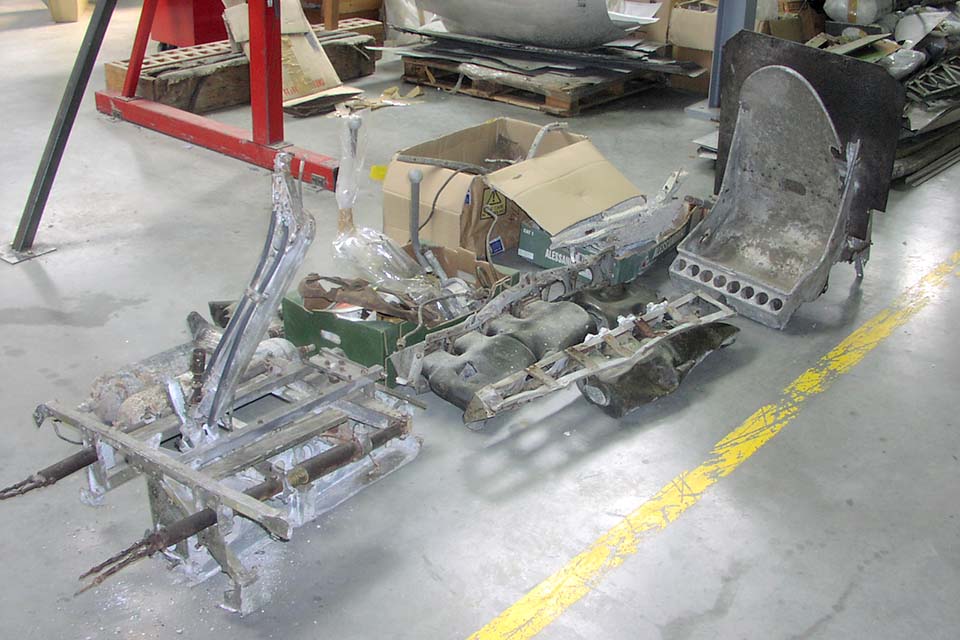
Jean Louf, manager of a nearby hovercraft port, figured it wouldn’t be long before nothing was left of the fighter, so in December 1980 he organized a recovery effort. Unfortunately, the operation was conducted in rather brutal fashion, with the recovery team lashing steel hawsers to the partly buried airframe and attempting to drag it out of the sand. Since the team didn’t account for the weight of the wet sand inside the structure, the results were inevitable: The engine was ripped from its mountings, and the hawsers chewed into wings and fuselage, mangling them. The wreckage that ended up at the hovercraft port no longer looked anything like an airplane.
Despite its poor condition, during a visit to the wreck in early 1981, I quickly established that it was a Spitfire Mark I. There were several giveaways: the metal three-bladed de Havilland propeller (later Spits mostly had wooden props), the Rolls-Royce Merlin III, the eight-gun fit and the hand-pumped undercarriage lever. Then we found the serial number P9374 stencilled on a component. Research into RAF records established that P9374 was a Mk. I of No. 92 Squadron that had force-landed on the beach on May 24, 1940. Its pilot, Flying Officer Peter Cazenove, took refuge in Calais just as it fell to the Germans. He spent the next five years as a POW, while his Spitfire sank ever deeper into the sand, finally disappearing from view. Later in life, Cazenove often remarked, “I wonder if they’ll ever find my old Spitfire?” By tragic coincidence, he died on the same day his fighter first emerged from the shifting sands.
At first the French national aerospace museum at Le Bourget took charge of the wreckage, but exhibited only the engine and guns. Before long the wreck was sold to a Frenchman who was restoring another Spit and planned to use P9374 as a parts plane.
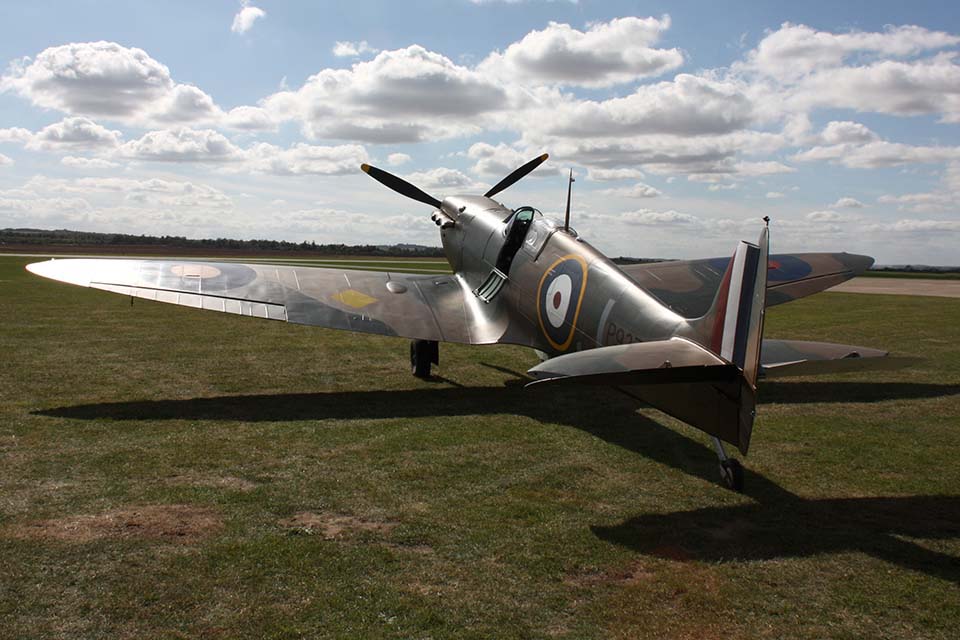
In 2000 a U.S.-based Spitfire devotee, Thomas Kaplan, purchased the remains and shipped them to England. Kaplan dreamed of returning to flight what would be the earliest surviving airworthy Mk. I. He was determined to have the airframe reconstructed in Britain, and informed the restoration team that he wanted this to be a stock-standard Spitfire I, perfect in every detail.
Nobody had ever attempted to restore a Mk. I, however, and the differences between early and later models presented a number of challenges. For example, no airworthy examples existed of P9374’s three-bladed, two-position, bracket-type propeller. The only option was to build one from scratch, which meant reverse-engineering an entire assembly (no plans or drawings were available), following exacting British Civil Aviation Authority rules.
For this task, a specialist aero-engine company, Retro Track & Air, stepped up to the plate. The company also rebuilt the Merlin III, using a significant number of components from the original engine. By any standard, recreating P9374’s prop and rebuilding its early-series Merlin power plant were both triumphs of engineering.
Established Spitfire specialist Airframe Assemblies constructed the fuselage on the Isle of Wight, and the wings were built in the Aircraft Restoration Company’s facility at the Imperial War Museum’s Duxford site. Headed by well-known restorer and warbird pilot John Romain, the company oversaw completion of P9374, including assembling the airframe, installing and ground testing the power pack, fitting flight systems and recreating the 1940 cockpit. The wings featured fabric-covered ailerons—notable because no Spitfire that incorporated this type of control surface had been built since 1939 (later models used full metal ailerons).
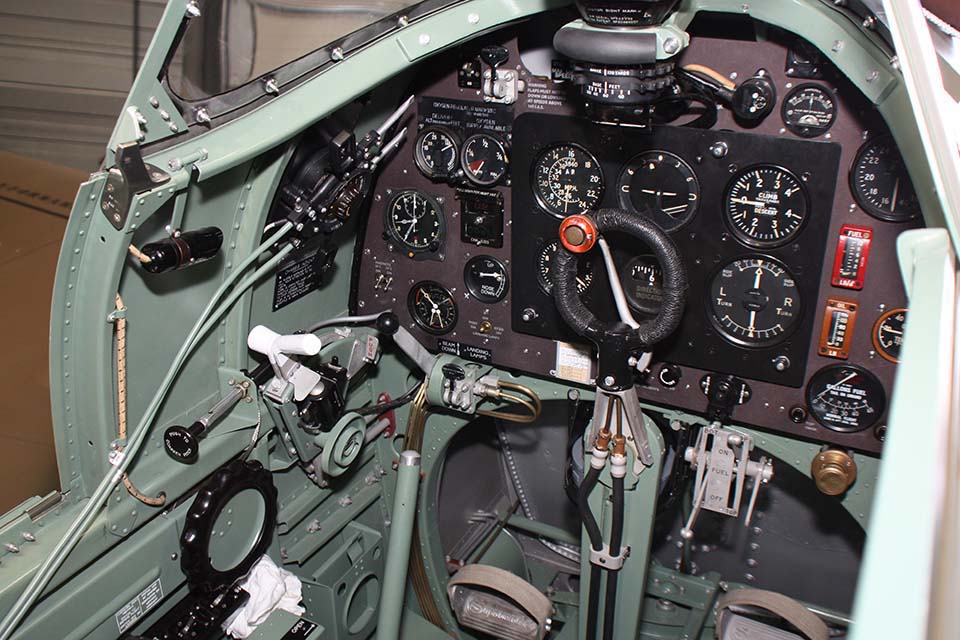
Kaplan insisted that all the components sourced for the cockpit had to be authentic to the period. If, for example, instruments turned out to date from 1941 instead of 1939 or 1940, they were not used. Whenever parts were simply not available, they were remanufactured, often at extraordinary cost. The only real compromise was a modern radio, but it was cunningly concealed in the cockpit map box. Modern electrical wiring was hidden inside custom linen-weave covering, manufactured exactly to the 1940 pattern.
Apart from its clean early Spitfire look, perhaps the most striking thing about the restored P9374 is its authentic paint scheme. Luckily, a photo had turned up of German troops posing with the aircraft on the beach in 1940. The image revealed that the Spit was already being buried in the sand at the time, but enough was visible to deduce the camouflage pattern. One unusual feature of P9374’s color scheme is its half white/half black underside, created to aid ground-to-air recognition. It was unique to RAF aircraft flown during a short period of 1940.
By late summer of 2011, P9374 was finally complete. Not only was this the earliest airworthy Spitfire in the world, it was also the most authentic in terms of overall fit and finish—right down to a full complement of machine guns, with 1940-dated ammunition.
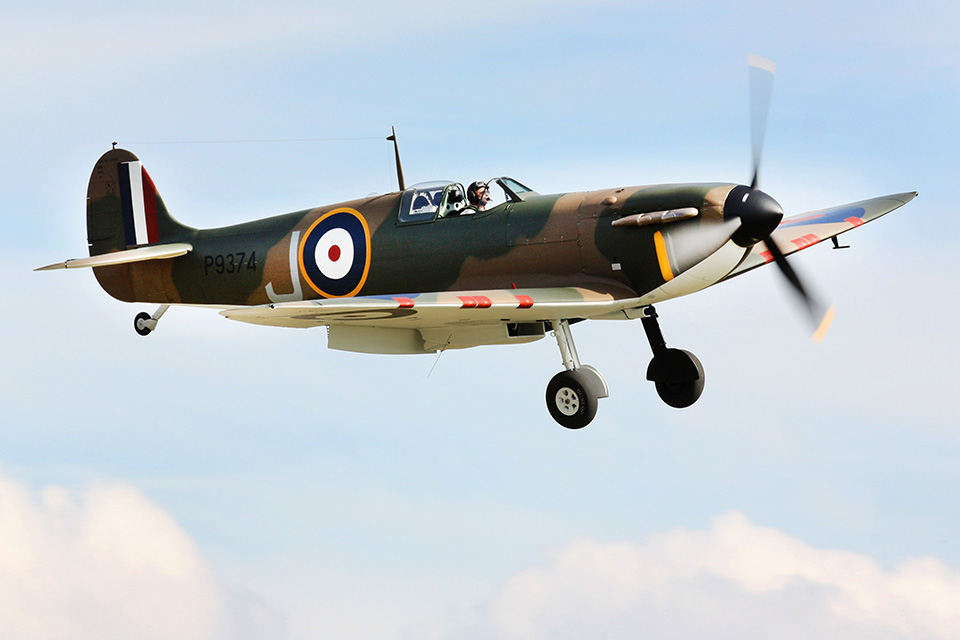
The Spit not only looked right, it flew right. After his first post-restoration flight on September 1, 2011, John Romain recorded his thoughts: “I slow down to 160 mph and lower the undercarriage. Propeller into fine pitch, radiator door open. Check for green ‘down’ lights on the undercarriage and slow to 140 mph for flaps. I am ready for their rapid deployment and trim the aircraft to 90 mph. Opening the hood causes a windy buffet through the cockpit, but what a feeling! A Spitfire on finals to Duxford, the airfield from where the Spitfire as an RAF type first became operational in 1939. It is a lovely sunny evening and I am in an airplane which is flying beautifully. I pinch myself and get on with the landing.”
Taxiing in, Romain recognized P9374 was the pinnacle of achievement in Spitfire restorations: “Everyone was ecstatic. And they should be. This is a fantastic restoration to be justifiably very proud of. P9374 is a truly lovely airplane, and she flies beautifully.”
Andy Saunders’ 2012 book about the restoration, Spitfire Mark I P9374 (Grubb Street Publishing), is recommended for further reading.
Spitfire from the Sands appeared in the May 2013 issue of Aviation History. To subscribe click here!

